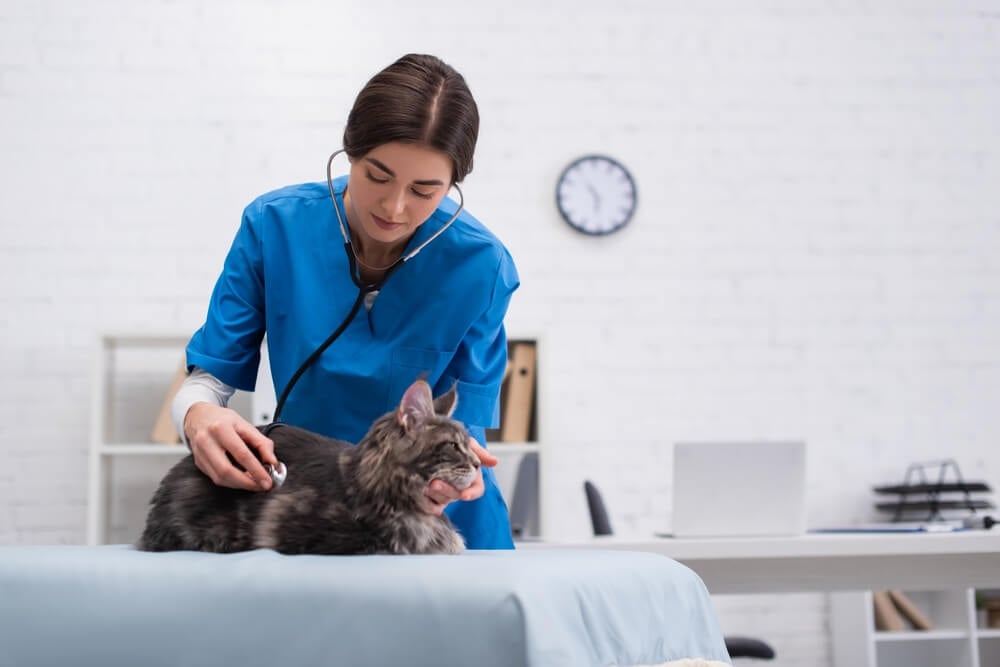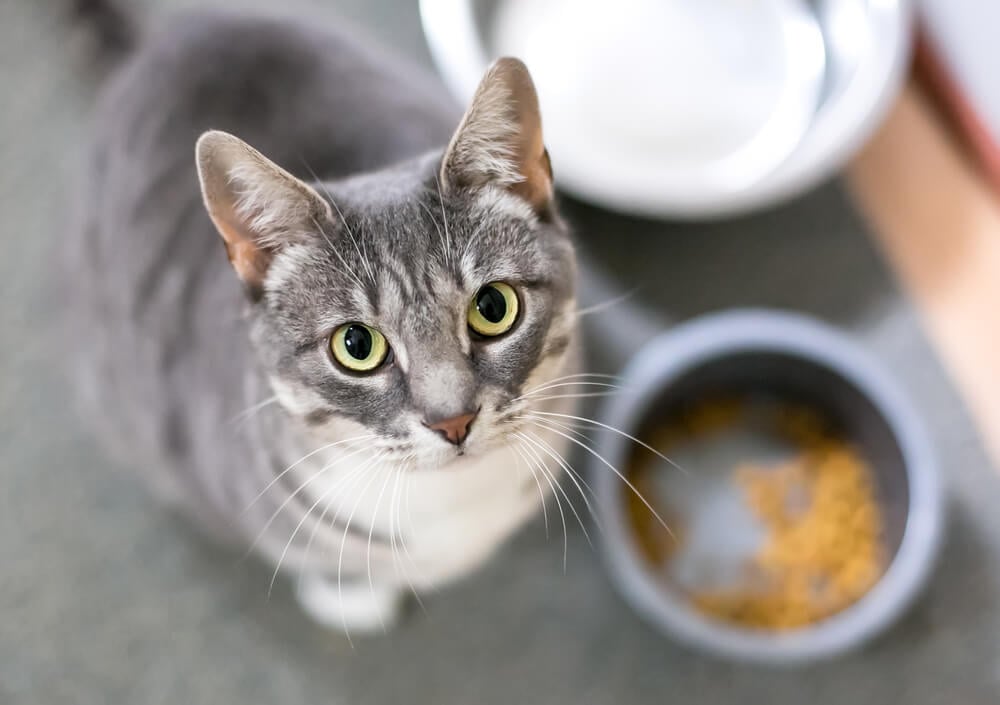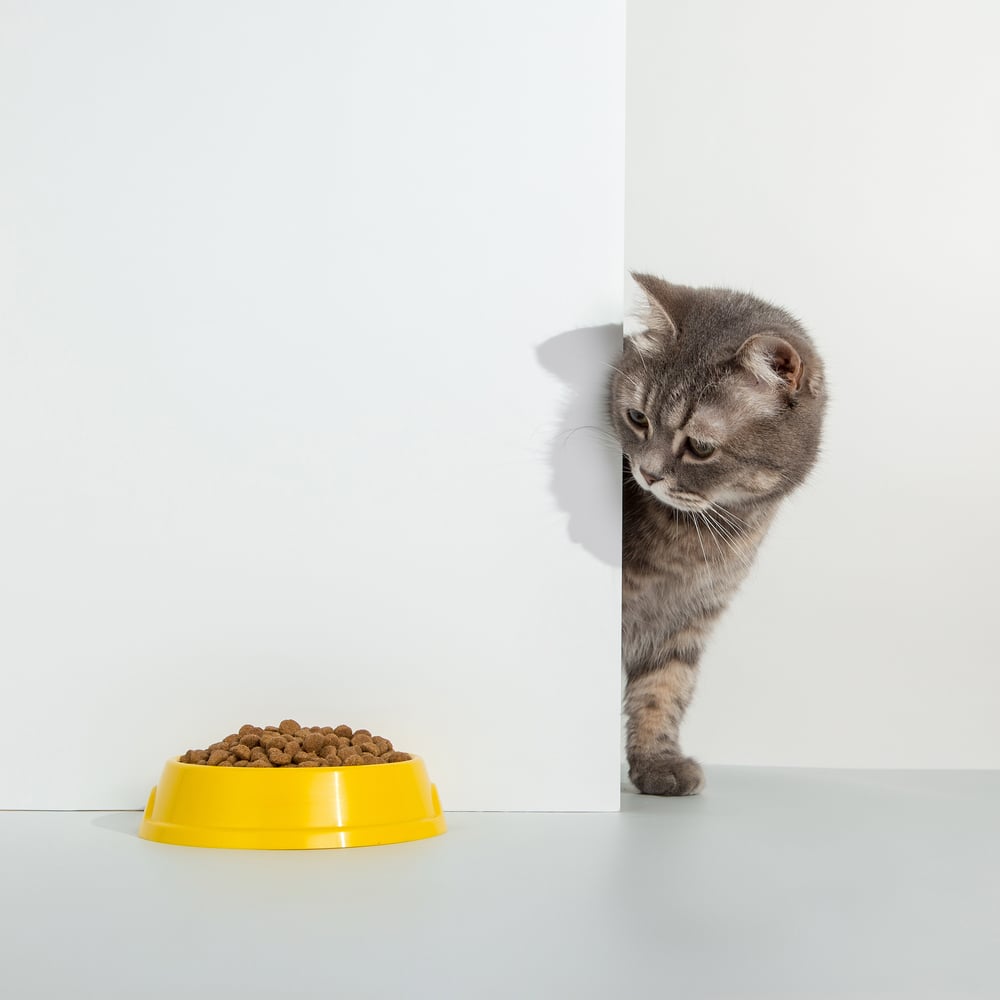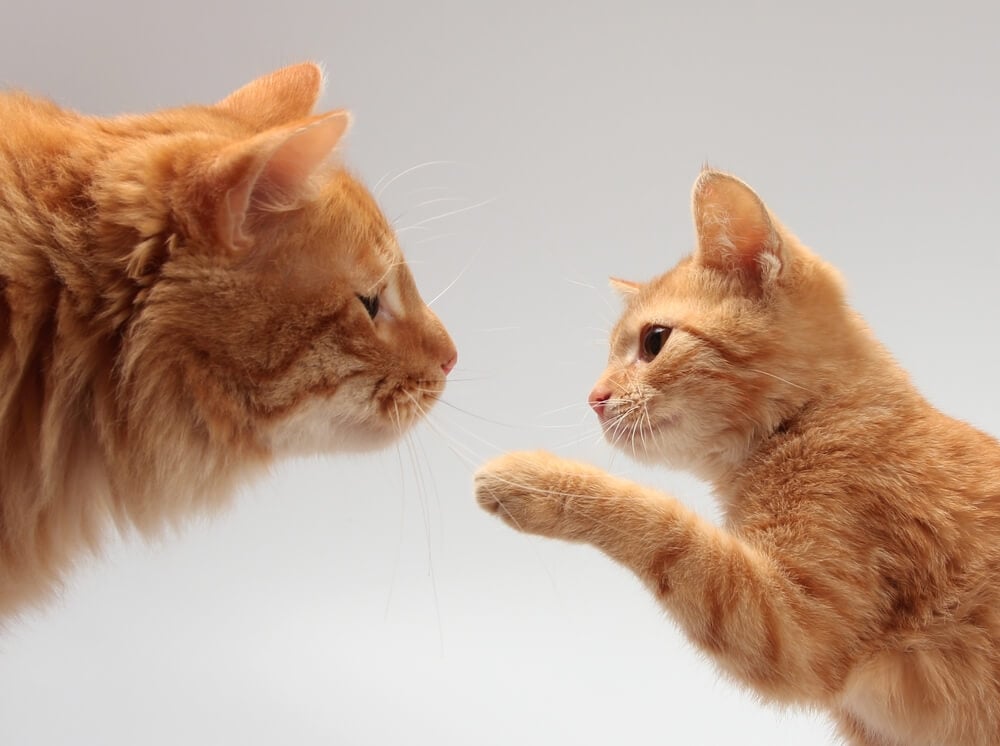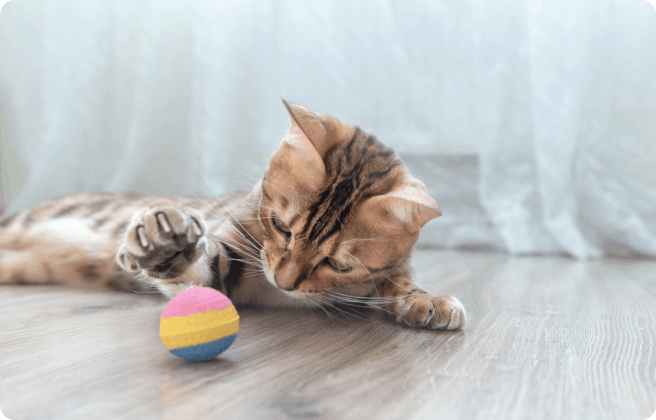
Cats are very intelligent and have bodies which are designed for physical activity, in particular hunting, so they need to be mentally and physically stimulated. An indoor cat which doesn’t have the chance to stalk birds in the wild, adventure across varied terrain, and meet other cats, may become bored and lethargic more easily.
So it’s important that indoor cat owners provide this stimulation through other means to make sure their cat is happy and healthy. There are multiple ways to keep an indoor cat entertained:
- Play chase
- Talk to your cat
- Provide toy options
- Set up a scratching post
- Play fetch
- Use a light
- Create hiding spaces
Play chase
Cats love to play chase with each other, even as fully grown adults, but some cats also enjoy being chased by their humans. If your cat darts away from you and then stops to look back at you before running again, this could mean they want you to chase them. Make sure your cat’s tail is upwards, as having their tail down might mean they are scared. Playing chase will be even more enjoyable for your cat if you reward them with a treat or cuddle afterwards.
Dedicate regular play sessions with your cat using toys like wand toys, feather toys, or small balls. Engage them in chasing, pouncing, and interactive play. This not only provides physical exercise but also stimulates their hunting instincts.
Engage your cat in interactive games like hide-and-seek using toys or treats. Hide toys around the house for them to find or create DIY obstacle courses using boxes or tunnels to keep them mentally and physically active.
Talk to your cat
As with all animals, communication is important, so talking to your cat can help with bonding and building trust. This is even more beneficial for cats who prefer to avoid human contact. The best way to talk to your cat is to get down to their level and speak softly in a high-pitched tone. Say your cat’s name and avoid staring as this could be seen as confrontational. This activity will be mentally stimulating for your cat.
Spending quality time with your cat through petting, grooming, or simply sitting with them can be highly valuable. Cats often crave human interaction and attention, and your presence can provide them with a sense of security and contentment.
Provide toy options
To keep an indoor cat entertained you should provide them with multiple toys and rotate these toys to keep their curiosity heightened. This way they can also choose which toys to play with and you can discover which they prefer. Toys which are specifically designed for cats such as mice, catnip, feather wands, and rattle balls are great, but scrunched pieces of paper and yarn will be just as fun for your indoor cat.
You could also look at toys which are designed to hide treats as this will not only test your cat’s intelligence but will keep them busy for hours. Ipad or tablet games for cats which stimulate them to catch items on the screen are another way to keep indoor cats entertained.
Set up a scratching post
Cats have a strong natural instinct to scratch trees and textured surfaces, but indoor cats will try and fulfill this urge in other ways — probably using your furniture. Scratching posts are the best way to keep them entertained inside by emulating the textures and objects they might encounter outdoors. There are hundreds of scratching posts which vary in price, size, and complexity, so try to choose one which you think your cat may enjoy. Scratching posts also provide your indoor cat with an opportunity to climb and explore, which is important for their physical wellbeing.
Play fetch
We usually associate this activity with dogs, but cats also enjoy a game of fetch. Cats are natural born hunters and by throwing a toy for them to chase, you are emulating their ‘prey’ instinct which will both mentally and physically stimulate them. Just be sure to use toys which are small enough for your cat to carry in its mouth. Encourage your cat to bring the toy back to you and reward them.
Use a light
Light play using reflective surfaces or light-up cat toys can be very stimulating for your cat. Chasing lights can provide the same mental and physical stimulation as playing fetch, but it can also be frustrating if overused. This is because your cat won’t have the same physical reward of catching something. So it’s a good idea to finish light play with a traditional toy for your cat to catch. You should also be wary of lasers in your cat’s eyes during this type of playtime.
Create hiding spaces
Entertaining a cat doesn’t always have to involve chasing. Another way for cats to practice hunting is by hiding and pouncing on their prey, so create this scenario at home by making a den or buying a play tunnel. You can then dangle a toy at the entrance to the hiding spot so they can practice stealth attacks.
All of these options are a great way to keep an indoor cat entertained but make sure you pay attention to what your cat enjoys the most. There’s not much point in having a basket full of toy mice if your cat prefers light toys. Also remember to keep rotating the way you entertain your cat to avoid repetition and boredom.
Why do people have indoor cats?
There are several reasons why people choose to have indoor cats:
- Safety: Keeping cats indoors helps protect them from various dangers and risks that exist outside. Outdoor cats face hazards such as traffic accidents, attacks from other animals, exposure to diseases, and the potential for getting lost or stolen. Keeping them indoors can help ensure their safety and well-being.
- Health and longevity: Indoor cats generally have a longer lifespan compared to outdoor cats. They are less likely to encounter infectious diseases, parasites, or injuries that outdoor cats are exposed to. Indoor cats are also at a lower risk of encountering toxic substances or consuming harmful plants.
- Environmental impact: Allowing cats to roam freely outdoors can have negative impacts on the environment. Outdoor cats may prey on native wildlife, leading to a decline in bird populations and other small animals. Keeping cats indoors helps protect local ecosystems and maintain the natural balance of wildlife.
- Urban living: In urban areas, it may be more challenging for cats to have safe access to outdoor spaces. Apartments or houses without enclosed yards might not provide a suitable environment for cats to roam freely. Keeping them indoors ensures their safety while still allowing them to enjoy a comfortable and enriched environment.
- Allergies or sensitivities: Some people have allergies or sensitivities to cats or their dander. By keeping cats indoors, they can reduce the exposure to allergens and minimize allergic reactions.
- Bonding and companionship: Indoor cats often have more opportunities for increased interaction and bonding with their owners. Living indoors allows for more quality time together, play sessions, and shared activities, strengthening the human-cat bond.
- City regulations or restrictions: In some areas, there may be specific regulations or restrictions on allowing cats to roam outdoors freely. Keeping cats indoors ensures compliance with local laws and regulations.
We uphold the highest editorial standards when creating the authoritative content pet parents rely on and trust.
Every piece of clinical content on the Cat Food Advisor is reviewed by our certified Veterinary Advisory Board, which consists of licensed veterinarians and medically certified specialists.
Our reviews are completely independent; we are not paid by any pet food company to promote their products favorably. We do not accept money, gifts, samples or other incentives in exchange for special consideration. For more information see our Disclaimer & Disclosure page.




